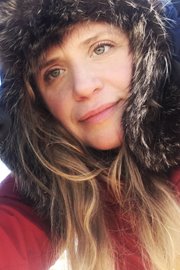Environment - 3rd Prize
The Carbon Threat
Katie Orlinsky
For National Geographic
For National Geographic
29 July, 2018
Geophysicist Sergey Zimov carries a rod to determine the depth of frozen ground at a research station in Ambarchik, Yakutia, northeast Siberia, Russia.
The Arctic permafrost is thawing at a faster rate than climatologists predicted, releasing carbon gases that could speed up global heating. Permafrost is carbon-rich frozen soil that covers 24% of the Northern Hemisphere land mass, encompassing vast stretches of territory across Alaska, Canada, Siberia and Greenland. It is a combination of soil, rocks and sand held together by ice and containing large amounts of organic carbon—frozen plant material that doesn’t decompose. As permafrost thaws, this material rots, releasing carbon dioxide and shorter-lived methane. Methane can be between 25 and 86 times more potent than CO2 as a greenhouse gas, depending on the timeframe of measurement. The thaw impacts people living in the region—particularly indigenous communities following centuries-old lifestyles. Thawing permafrost undermines house foundations, makes the landscape more difficult to navigate and causes ice cellars (homemade freezers dug into the permafrost) to flood and provisions to spoil.

Katie Orlinsky
Katie Orlinsky was born and raised in New York City, USA and began her career as a photographer in 2007. Orlinsky has photographed all over the world, documenting everyt...
Through our education programs, the World Press Photo Foundation encourages diverse accounts of the world that present stories with different perspectives.
Our exhibitions showcase stories that make people stop, feel, think and act to a worldwide audience.
Our annual contest recognizes and rewards the best in photojournalism and documentary photography.
